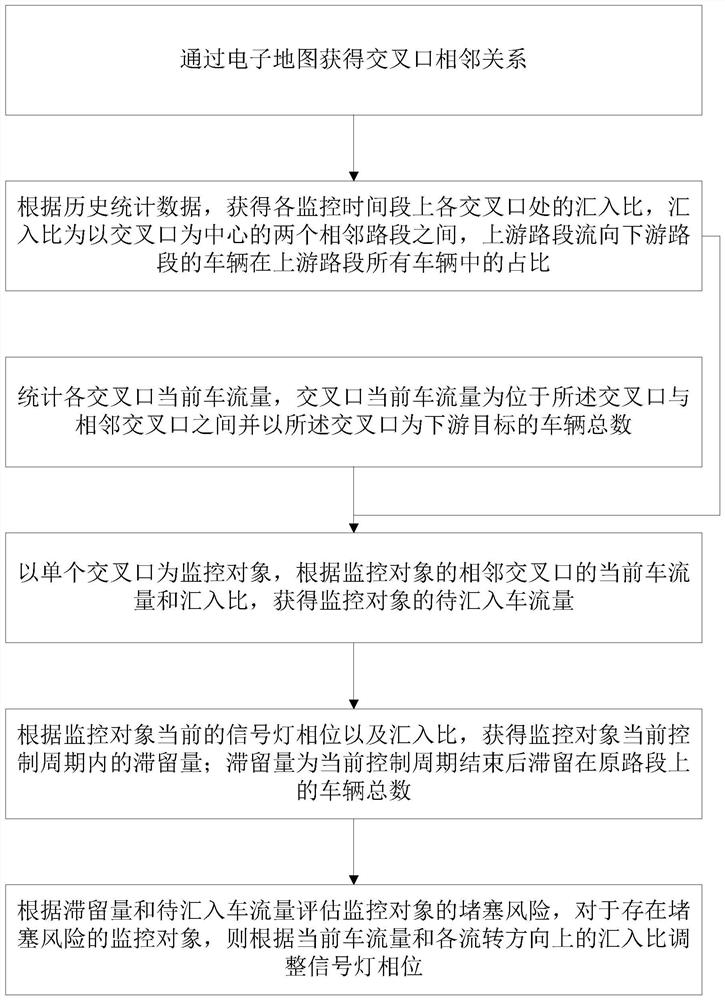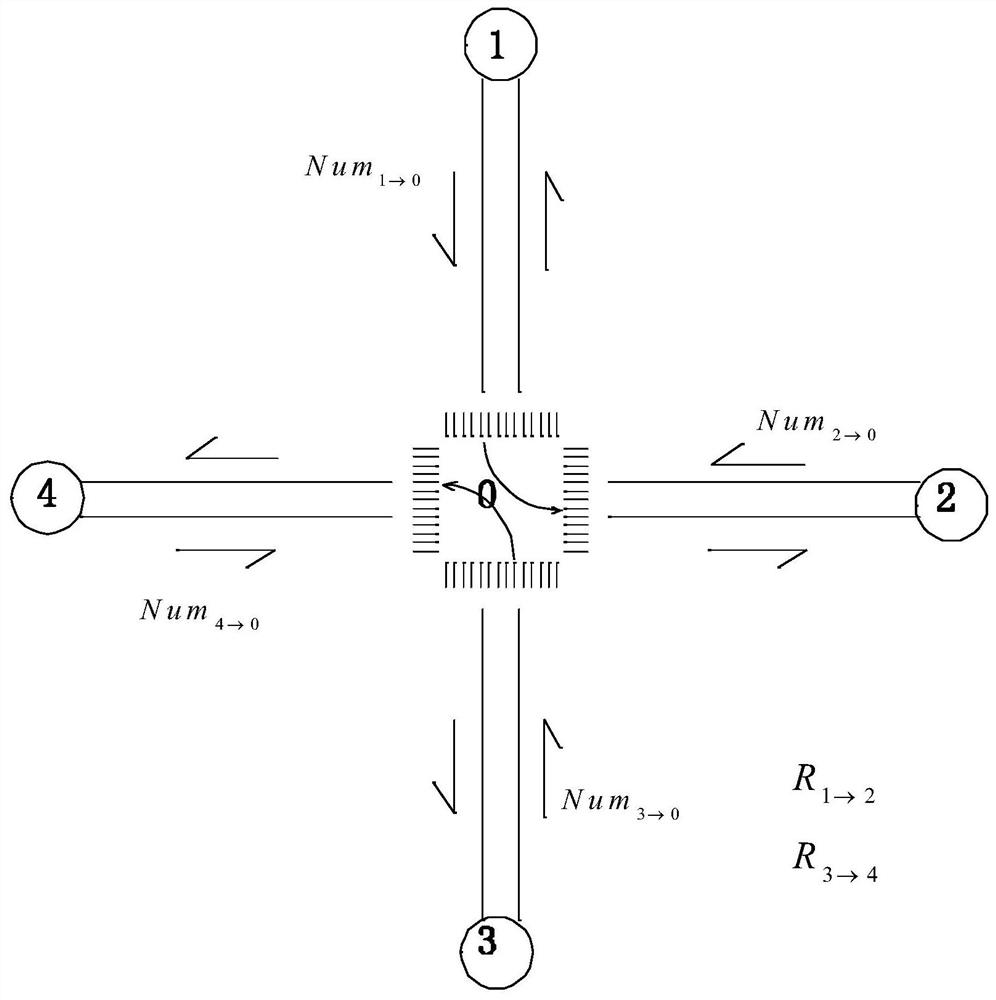Intersection variable lane control method based on short-time traffic state prediction
A traffic state and lane control technology, applied in traffic control system, road vehicle traffic control system, traffic flow detection, etc., can solve problems such as delaying work progress, uneven road driving, and optimal control of intersections that cannot be isolated. Achieve the effect of reducing computational complexity, improving control efficiency, and ensuring smooth traffic
- Summary
- Abstract
- Description
- Claims
- Application Information
AI Technical Summary
Problems solved by technology
Method used
Image
Examples
Embodiment 1
[0051] In this embodiment, the calculation method of the retention amount of the monitoring object is described.
[0052] Specifically, assuming that the number of adjacent intersections of the monitored object is n, and the connected sections of the monitored object are all two-way roads, the vehicle flow direction at the intersection is n(n-1), that is, the monitored object is associated with n( n-1) remittance ratios.
[0053] Then in the current control period, the retention amount of the monitored object is:
[0054]
[0055] Among them, Num i is the actual traffic quantity of the i-th flow direction in the current traffic flow within the monitoring period, specifically, Num i is the product of the number of vehicles on the upstream section of the i-th flow direction and the inflow ratio of the i-th flow direction. is the maximum number of traffic in the i-th flow direction in the current traffic flow within the monitoring period.
[0056] by figure 2 The three-...
Embodiment 2
[0068] In this embodiment, compared with Embodiment 1, the signal light phase is adjusted through the following steps. :
[0069] S61. Calculate the predicted retention value of the monitored object in the next control cycle.
[0070] Specifically, the formula for calculating the predicted value of retention is:
[0071] O' 滞留 =O'+O 滞留 -(O-O 滞留 )=O'-O+2O 滞留 ;
[0072] Among them, O' 滞留 is the predicted value of retention, and O' is the incoming traffic flow of the monitoring object.
[0073] S62. Determine whether the retention prediction value is greater than the preset risk threshold; if not, maintain the current signal light strategy. Specifically, the risk threshold is greater than 1 and less than or equal to 5.
[0074] S63. If yes, adjust the phase of the signal light according to the current traffic flow and the inflow ratio of each flow direction.
Embodiment 3
[0076] In this embodiment, with respect to embodiment 2, in step S63, the signal light phase is assigned a time period according to the time required for the vehicle to pass through completely in each direction of flow.
[0077] Take the three-way intersection in Embodiment 1 as an example.
[0078] In this embodiment, since the vehicle rotation directions 1, 2, and 3 can pass in the two signal light phases, firstly, the time period of each signal light phase can be regarded as composed of two parts, which are respectively only the traffic in the phase. The time required for the direction of flow and the time required for the direction of flow that can pass within the phase.
[0079] In this embodiment, when adjusting the signal lamp phase, the redistribution time length of the three phases is set as: t1', t2' and t3', and t1':t2':t3'=B1:B2:B3, t1' +t2'+t3'=T, T is the duty cycle of the signal light.
[0080] B1, B2, B3 can be calculated according to the following formula: ...
PUM
 Login to View More
Login to View More Abstract
Description
Claims
Application Information
 Login to View More
Login to View More - R&D
- Intellectual Property
- Life Sciences
- Materials
- Tech Scout
- Unparalleled Data Quality
- Higher Quality Content
- 60% Fewer Hallucinations
Browse by: Latest US Patents, China's latest patents, Technical Efficacy Thesaurus, Application Domain, Technology Topic, Popular Technical Reports.
© 2025 PatSnap. All rights reserved.Legal|Privacy policy|Modern Slavery Act Transparency Statement|Sitemap|About US| Contact US: help@patsnap.com



